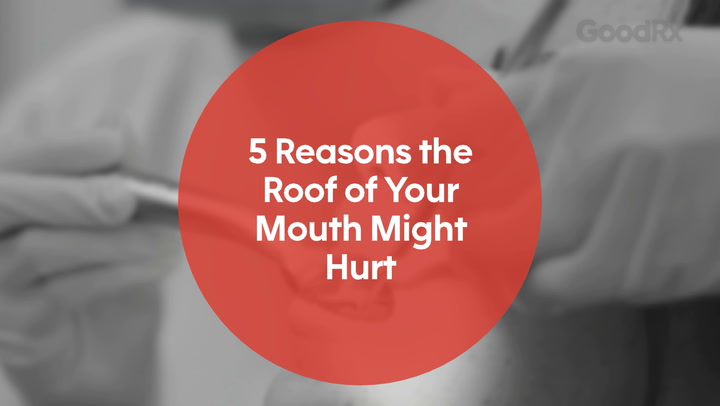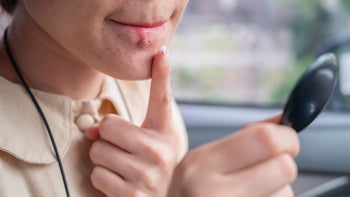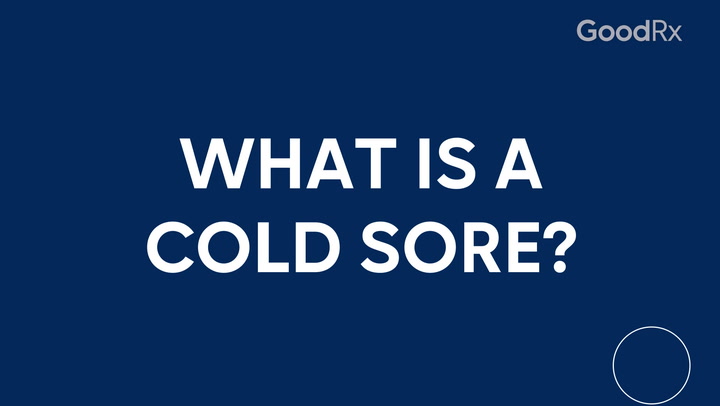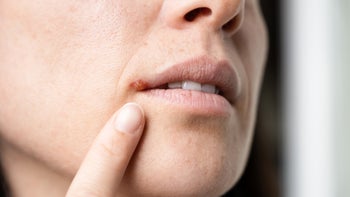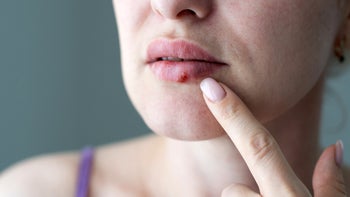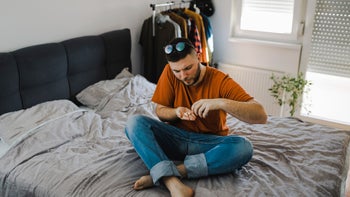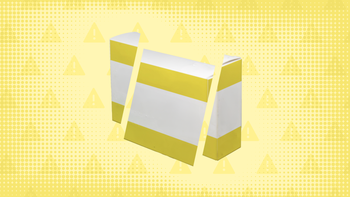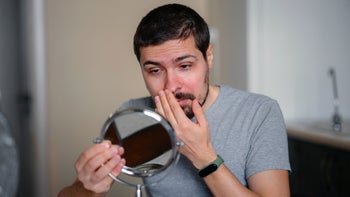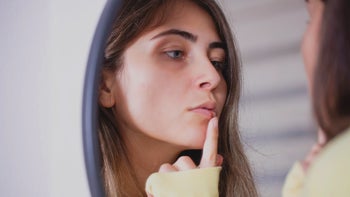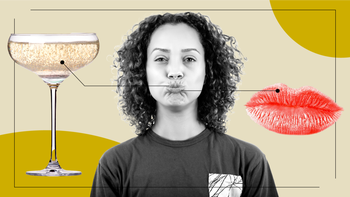
Red Light Therapy for Cold Sores: Does It Actually Work?
Key takeaways:
Red light therapy has been shown to help cold sores heal faster and prevent them from coming back.
Even though research in red light therapy for cold sores shows promising results, the studies are all small. And there’s no standard approach to the frequency or duration of treatment.
Red light therapy is generally safe if done correctly. But you should avoid it if you’re pregnant or have a health condition that makes you more sensitive to light.

Red light therapy has an interesting history. Even though scientists have been studying it for decades, it was research from NASA that uncovered its potential as medicine.
Scientists were trying to figure out how to use certain wavelengths of light to help grow plants in outer space. And while working with red light, the scientists noticed that wounds on their hands seemed to heal faster.
Now, red light has been studied as a potential treatment for acne, wound healing, skin rejuvenation, and cold sores.
What is red light therapy?
Red light therapy is a treatment that uses low-wavelength infrared light to help the appearance of scars, acne, wrinkles, and other skin conditions. The light is usually emitted from a light emitting diode (LED) device. Red light therapy is also sometimes referred to as:
Soft laser therapy
Low-level light therapy
Low-power laser therapy
Cold laser therapy
Non-thermal LED light therapy
Photobiomodulation
Phototherapy
Photodynamic therapy
Biostimulation
Red light therapy uses a red light because its frequency can pass through the skin. Its wavelength can be absorbed by the cells that capture and use light energy.
Does lysine work for cold sores? Some research suggests that lysine supplements can help shorten the duration of cold sores. Learn more before you give it a try.
Your guide to cold sore medicines: Our experts review your options for over-the-counter (OTC) and prescription medications to help get rid of cold sores.
Can you get cold sores from sharing a drink? Yes. Cold sores are caused by the herpes virus, which can be spread through saliva. Learn more about herpes transmission to protect yourself and others.
Red light acts on something in your cells called mitochondria. Mitochondria produce energy, which is stored in a molecule called adenosine triphosphate (ATP). As people age, mitochondria produce less ATP. Red light therapy stimulates mitochondria to produce more ATP, providing other cells in the body with renewed energy.
Exposure to red light can also activate other cells in the body to produce antioxidants. Antioxidants are compounds that help prevent damage and decrease inflammation in the body.
How does red light therapy treat cold sores (herpes)?
There’s research to suggest that red light therapy can help cold sores heal faster — and prevent them from coming back. But it’s important to note that most of the studies are in a small number of people. And each study uses different wavelengths of light and frequency. This makes it hard to know exactly how much red light therapy is needed to treat cold sores.
In one study, people with herpes cold sores who were treated with red light therapy had a quicker recovery time. It shortened their healing time from an average of 7 to 5 days.
Another review looked at several different studies on red light therapy for cold sores. It found that the most effective way to use red light therapy was in combination with an antiviral ointment. More specifically, the review found a benefit with the combination of:
Red light laser every day — wavelength 635 nm, power 15 mW/cm2 to 25 mW/cm2 — for 5 minutes, started within the first 24 hours of an outbreak
Antiviral gels or creams — with acyclovir (Zovirax) as the active ingredient — also used every day
Red light therapy may also help prevent cold sores. One study looked at red light therapy in people who get frequent cold sores. Results showed that daily red light therapy for 10 days decreases the chances of an outbreak coming back.
While red light therapy may help treat or prevent cold sores, it’s important to note that it doesn’t completely get rid of the herpes virus.
Can red light therapy cause cold sores?
No, red light therapy doesn’t cause cold sores. Exposure to ultraviolet B (UVB) light — which occurs naturally in sunlight — has been associated with reactivation of the herpes virus and may make cold sores worse.
Photochemotherapy — another type of UV radiation — may also activate the herpes virus and make cold sores worse. But this is different from red light therapy. It combines a drug with exposure to ultraviolet A (UVA) light, which is emitted by the sun and tanning beds.
In short, sunlight may trigger cold sore outbreaks. But red light doesn’t.
Is red light therapy safe?
Red light therapy is generally safe. But there are a few things to know before you try it:
No guidelines are available. There are no guidelines for the best wavelength, frequency, or duration of each treatment session. This may affect how effective it is from person to person.
Long-term safety is unknown. No one has studied the long-term safety of red light therapy. So, it’s unclear if frequent or long-term use is safe.
Results may vary. Results from red light therapy may change depending on who’s performing the treatment — from personal use at home to a technician at a spa.
Risks do exist. Using a red light therapy device incorrectly may cause damage or irritation to the skin.
And some people should avoid red light therapy altogether. This includes:
People with conditions like lupus, which make them sensitive to light
People who are taking medications that make their skin more sensitive to light, like certain antibiotics, NSAIDs (nonsteroidal anti-inflammatory drugs), and diuretics.
Pregnant women, since there’s no research on the safety of red light therapy in pregnancy
As always, it’s a good idea to talk to a trusted healthcare professional before trying a new treatment. This isn’t just to make sure it’s safe for you. If you get cold sores, it can be a good opportunity to review all your treatment options. This way, you can choose the treatment that feels best for you.
Frequently asked questions
There are no clear guidelines on how often you should use red light therapy for a cold sore. In the existing studies that show a benefit, participants used red light 1 to 3 times a day
Redlight therapy has been shown to help with wound healing of various kinds. This includes cold sores, which are a blistering rash. So it's possible that red light therapy can help with blisters of all kinds.
Yes, you can use red light therapy to treat canker sores. There’s not a lot of research on the topic. But one small study showed that it helped speed up the healing time of canker sources.
The bottom line
Small studies suggest that red light therapy may be an effective way to heal cold sores and prevent them from coming back. But as far as researchers know, the most effective way to use it is in combination with antiviral treatments. If you get frequent cold sores and want to give red light therapy a try, it’s usually a pretty safe option. But at this time, it’s hard to know the best frequency and duration of red light therapy treatment for cold sores.
Why trust our experts?


References
Abe, Y., et al. (2019). Red light-promoted skin barrier recovery: Spatiotemporal evaluation by transepidermal potential. Public Library of Science One.
Aggarwal, H., et al. (2014). Efficacy of low-level laser therapy in treatment of recurrent aphthous ulcers – a sham controlled, split mouth follow up study. Journal of Clinical and Diagnostic Research.
Dougal, G., et al. (2013). Evaluation of the efficacy of low-level light therapy using 1072 nm infrared light for the treatment of herpes simplex labialis. Clinical and Experimental Dermatology.
Mammari, N., et al. (2022). Phototherapy-based treatment for sexually transmitted infections—shining light into unexplored territory. Venereology.
Moskvin, S. V. (2021). Low-level laser therapy for herpesvirus infections: A narrative literature review. Journal of Lasers in Medical Sciences.
Mota, L. R., et al. (2018). Efficacy of phototherapy to treat facial ageing when using a red versus an amber LED: A protocol for a randomised controlled trial. British Medical Journal Open.
National Aeronautics and Space Administration. (2022). NASA research illuminates medical uses of light.
Rathod, D. G., et al. (2023). Phototherapy. StatPearls.
Schindl, A., et al. (1999). Low-intensity laser therapy is an effective treatment for recurrent herpes simplex infection: Results from a randomized double-blind placebo-controlled study. Journal of Investigative Dermatology.
Tafur, J., et al. (2008). Low-intensity light therapy: Exploring the role of redox mechanisms. Photomedicine and Laser Surgery.


